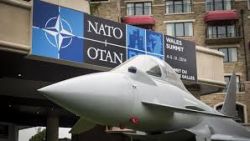Scotland Split Could Shake Up UK Defence Preparedness and Industry

The UK defence establishment could be significantly impacted if Scottish voters vote “yes” on the Sept. 18 referendum over independence from the UK.
Scotland is home to many important defense assets including Naval Base Clyde, in Argyll & Bute and many MOD prime contractors, including Babcock, BAE Systems, Rolls-Royce, Selex ES, Thales, Raytheon and QinetiQ have sites in the region. The “strategic nuclear deterrent” is based in Clyde.
According to Scottish Development International, the aerospace, defence and marine industry in Scotland accounts for ten per cent of the UK industry, with over 800 companies employing nearly 40,000 staff, with the defence sector employing over 12,600 people and having sales in excess of £1.8 billion per year.
“The MOD spends about £140 million per year on maintaining the defence estate in Scotland; and planned investments over the coming years include an additional £100 million for British Army basing, £85 million for development of RAF Lossiemouth and hundreds of millions of pounds at Her Majesty’s Naval Base Clyde,” Philip Hammond, Secretary of State for Defense told Parliament last year.
“While there are many important defence assets located in Scotland, these do not operate in isolation; in order to fulfil their roles effectively they depend on close integration with other elements, including services and infrastructure spread across the rest of the UK. Each base or establishment fits together as part of a jigsaw, performing a specific, inter-locking function,” he added.
According to a 2013 study published by the UK MoD called Scotland analysis: Defense, a good example is the Royal Air Force’s management of security for the entirety of the UK’s airspace from the Control and Reporting Centre at RAF Boulmer in Northumberland which forms part of the Air Surveillance and Control System.
As part of a UK-wide response, the Control and Reporting Centre integrates information from long-range military and civilian air traffic control radars across the UK (including sites in Scotland), with intelligence and tactical data from airborne or naval surveillance assets from NATO or UK sources to provide comprehensive situational awareness.
This is used to determine when high-readiness Quick Reaction Alert Typhoon fighters are launched in response to an incident from RAF Leuchars in Fife (in future RAF Lossiemouth in Moray) or RAF Coningsby in Lincolnshire. This integrated system provides coverage across the whole of the UK, enabling a timely response against fast-moving potential threats from any direction, the study added.
Various proposals or options have been put forward by the Scottish National Party (SNP) and others regarding the possible defence posture and capabilities of an independent Scottish state, with estimated costs ranging from £1.6 billion to £2.5 billion to cover defence, intelligence and cyber capabilities.
Even the highest of these estimates is only about 7 per cent of the combined UK budgets for defence, intelligence and cyber, and less than countries such as Denmark and Norway spend on defence alone. It is not clear what level of security and protection the proposals would provide for Scotland; but it is clear that it would be much less than that provided to Scotland as part of the UK, the study explains.
“The UK Government has made it clear that it is not planning for Scottish independence or to move the strategic nuclear deterrent from Her Majesty’s Naval Base Clyde. If the result of the referendum were to lead to the current situation being challenged, then other options would be considered, but any alternative solution would come at huge cost. It would be an enormous exercise to reproduce the facilities elsewhere,” Hammond said.
“It would cost billions of pounds and take many years. Furthermore, if the nuclear deterrent had to relocate, then so would thewhole of the submarine enterprise, including the Royal Navy’s attack submarines and the submarine centre of excellence.23 This would have a major impact upon the sustainability of the base, which is the biggest employment site in Scotland,” he added.
The MOD is, by far, the primary customer for the shipbuilding industry in Scotland, which is structured to be able to meet the capability demands of the Royal Navy.
The Scottish shipbuilding industry has played a major part in the successful delivery of the Royal Navy’s six Type 45 destroyers: building work and final assembly were carried out at the Govan and Scotstoun yards as part of a £5.6 billion procurement programme.
Scottish yards also have a major part in building and assembling the Royal Navy’s Queen Elizabeth Class aircraft carriers and, as at July 2013, the MOD had spent around £1.9 billion on work billed to the programme by BAE Systems on the Clyde and Babcock at Rosyth; over £300 million of sub-contracts have also been placed with Scotland-based companies by the Aircraft Carrier Alliance.
Future MOD plans for complex warships currently include the proposals for the Type 26 Global Combat Ship programme. There are currently about 300 industry jobs in Scotland linked directly to this programme at the BAE Systems Maritime Naval Ships site in Scotstoun working on design, project management and supply chain. Final decisions on the programme, including where the ships will be built will not be taken until the middle of the decade.
It is estimated that shipbuilding work on the programme would be worth billions of pounds and support thousands of jobs not just at the shipyard that will build these vessels, but also at suppliers across the UK, including Scotland.
In the event of independence, companies based in an independent Scottish state would no longer be eligible for contracts that the UK chose to place or compete domestically for national security reasons; and where they could continue to compete they would be pitching for business in a competitive international market dominated by major economic powers, the study said.










